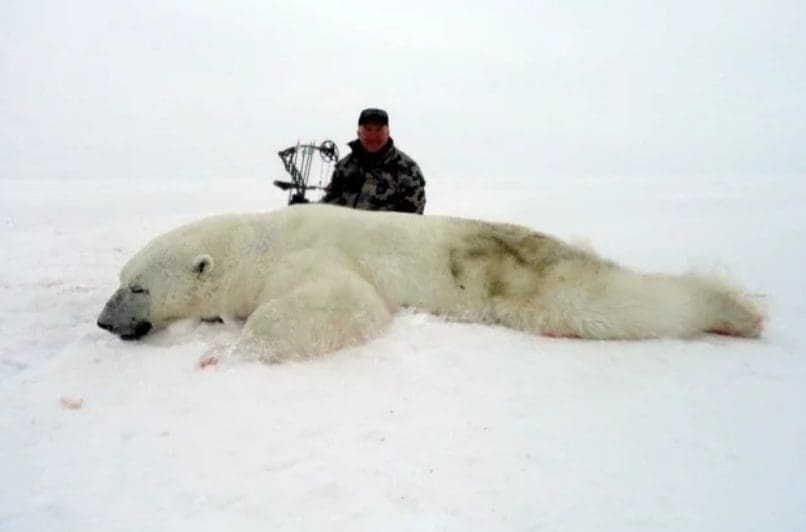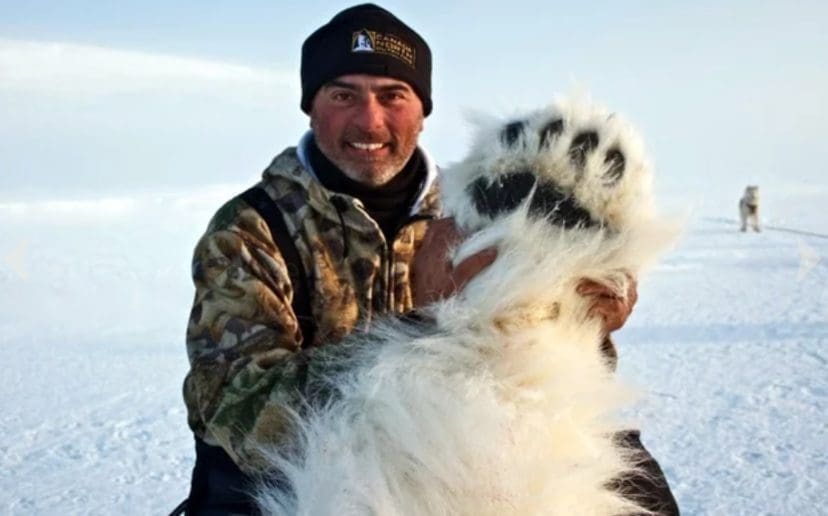Images have surfaced of trophy hunters smirking over the bodies of polar bears they just killed. These shocking images were released by a campaign aiming to ban trophy hunting.
Hunting expeditions usually involve organised safaris for individuals, who pay thousands of dollars, to stalk and kill large animals in their natural habitat. It is extremely popular on the African continent, and this has brought rise to the sickening ‘canned lion hunting’ industry. Blood Lions defines Canned hunting as ‘the shooting of captive bred and/or tame animals in confined areas.’
Just two weeks ago , a Canadian couple took a photo of themselves kissing over the body of a beautiful male lion they just killed in one of these canned hunts.

Polar bears are classed as vulnerable on the International Union for Conservation of Nature’s Red List.Despite this, reports suggest up to 5,000 polar bears have been killed by hunters in the Arctic Circle in recent years.
The animal tourism trade is reportedly on the rise, with hunting trips in parts of Canada that extend into the Arctic Circle becoming increasingly popular. 17 polar bear trophies have been legally imported into the UK alone since 1995. Specialist hunting companies primarily target wealthy Americans, Brits and Chinese people, according to the Mirror.
Eduardo Gonçalves, of the Campaign to Ban Trophy Hunting, said:
It is well known polar bears are in serious danger of becoming extinct because of climate change.
If we want to see them survive, we need to stop the senseless slaughter. The Government should ban imports of all hunting trophies right away.

These hunting expeditions carry a hefty-price tag with 12-day trips costing up to $44,000. This includes the services of a taxidermist, who turns the murdered animals into rugs and wall mountings for the hunters’ living rooms.
One such company, Nebraska-based Worldwide Trophy Adventures, offers hunters an extended trip should they not manage to kill an animal, saying they can ‘return for another 10 days if a polar bear is not taken’.
Their website states:
Hunting is carried out on the sea ice in prime areas. Services of an Inuit polar bear guide with a team is provided through the duration of the hunt. The hunt ends when a bear is harvested.
Quality Hunts, another hunting operator, gives hunters a 100 per cent ‘success rate’ in hunting polar bears. Prices start at $39,500 for a 12-day expedition, which also apparently includes the services of a local Inuit guide, who helps track the animals, and the taxidermy of animals after the hunt.

While Inuit communities are allowed to kill a set number of bears and walruses in a season, as Inuit communities have done historically, some Canadian Inuit communities are said to be selling the licences for these blood sports.
In 2008, the US government declared polar bears an endangered species, and prohibited US hunters from bringing trophies back to the US from Canada.
So far, Norway is the only country to have banned all hunting, while Russia, Greenland and Alaska, only allow native communities to hunt bears for food.
